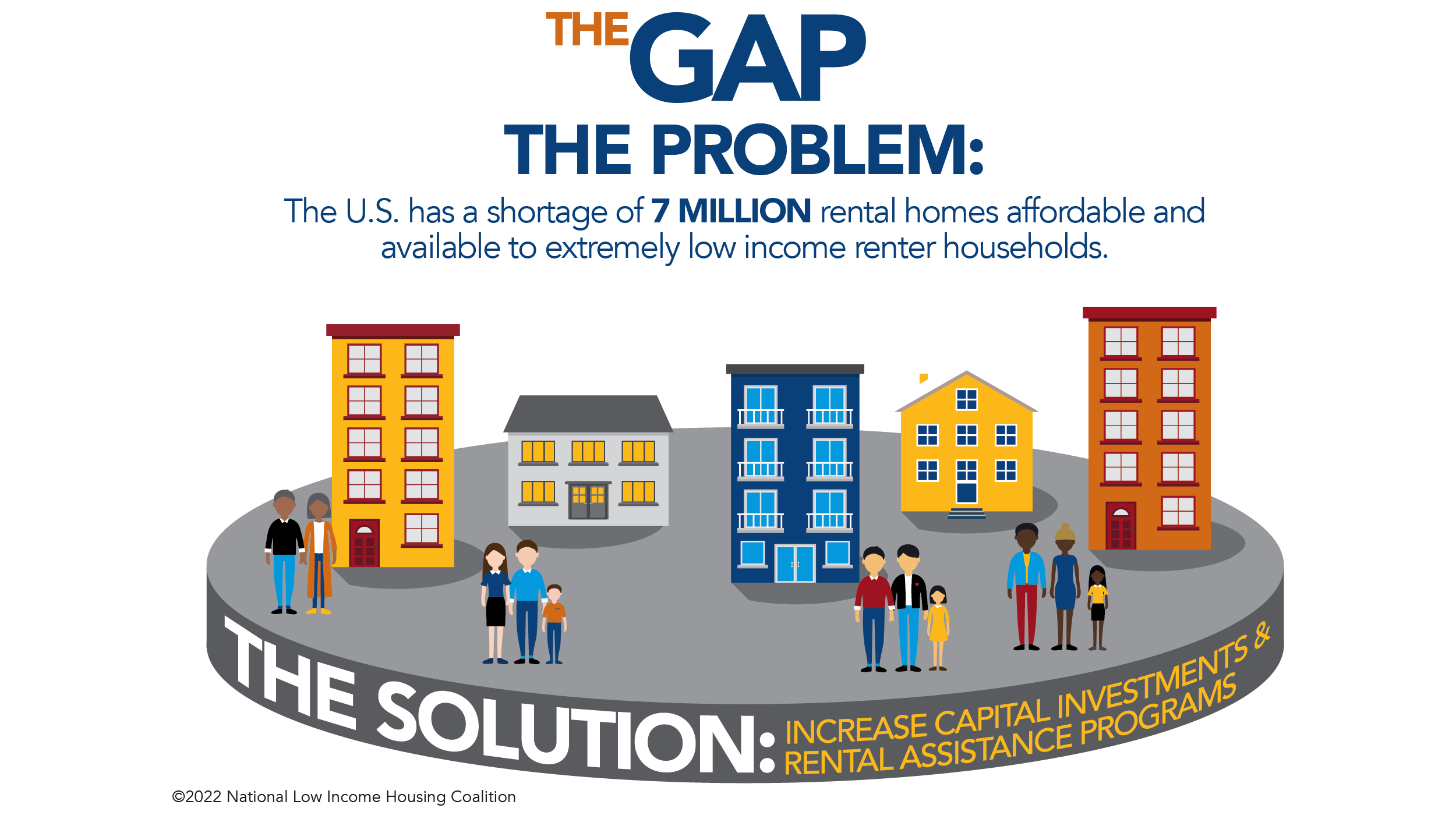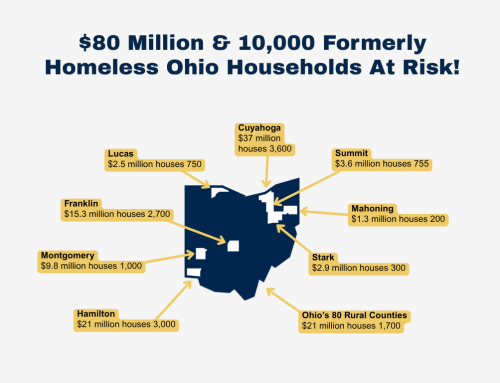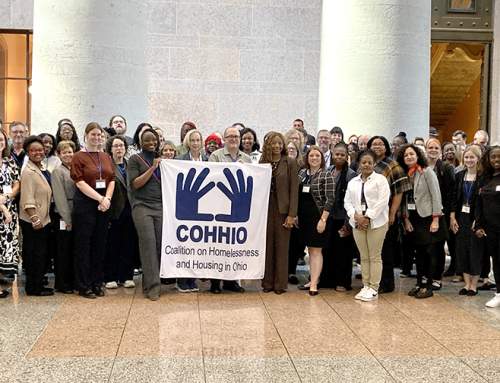FOR IMMEDIATE RELEASE
April 21, 2022
Report Underscores Need to Invest in Affordable Housing Recovery
Housing advocates released data Thursday revealing a dire shortage of homes that are affordable to low-wage families, and urged state leaders to invest federal recovery funds to create more affordable housing.
The Gap report released jointly by the Coalition on Homelessness and Housing in Ohio and the National Low Income Housing Coalition shows a deficit of 254,545 rental units that are affordable and available to the state’s 443,717 extremely low income households. That equates to only 43 affordable units for every 100 households.
Based on Census data from 2016 to 2020, the Gap Report largely reflects pre-pandemic housing needs, which have grown more severe over the past two years. Rents skyrocketed in 2021, increasing by an average of 11 percent in Ohio’s largest cities.
COHHIO Executive Director Bill Faith called on state leaders to invest $308 million of the $5.6 billion in State Fiscal Recovery Funds that Ohio received from the American Rescue Plan Act to address the affordable housing shortage.
“We’ve released the annual Gap Report for many years, but this is the first time Ohio has actually had the resources to do something about it,” he said. “Our proposal is a perfect fit for these recovery funds. It would create affordable homes for low-wage working families, seniors, people with disabilities, youth aging out of foster care, domestic violence survivors and other vulnerable Ohioans.”
More than 200 companies and organizations are supporting COHHIO’s affordable housing plan, including the Ohio Chamber of Commerce, Ohio REALTORS, the Ohio Bankers’ League, CareSource, Huntington Bank, Nationwide Children’s Hospital, PNC, and the Ohio Apartment Association.
“Employees need a safe, decent, affordable home to raise healthy families and be productive at work,” Ohio Chamber of Commerce President & CEO Steve Stivers said. “This one-time investment of Ohio’s Fiscal Recovery Funds on affordable housing will create jobs in the near-term, and will strengthen our workforce for the long-term.”
Erica Mulryan, Director of the Ohio Balance of State Continuum of Care, which oversees the homeless system in Ohio’s 80 non-urban counties, said rising rents and the lack of affordable housing are making it more difficult to get people out of shelter and into permanent homes.
“Our agencies’ rehousing programs depend on private landlords to help get people out of homelessness. But it’s getting harder and harder to find landlords who are willing to partner with us,” Mulryan said. “Ohio’s rural and suburban counties desperately need more affordable housing.”
Although the federal government took unprecedented action to protect vulnerable renters during the pandemic, the assistance was temporary.
“The pandemic has made plain our nation’s lack of a housing safety net,” said NLIHC President and CEO Diane Yentel. “It is time to invest in long-term housing policies that will finally address the systemic shortage of affordable housing and provide housing stability for the lowest-income families.”
For additional information, visit: https://nlihc.org/gap/state/oh
-30-








